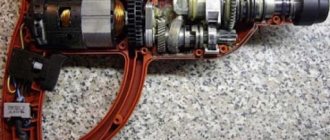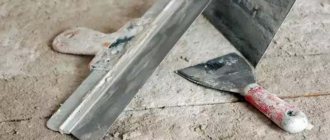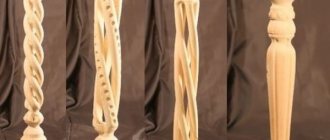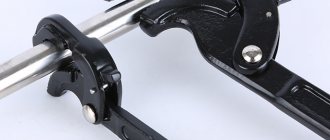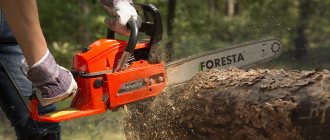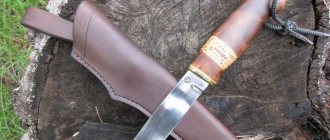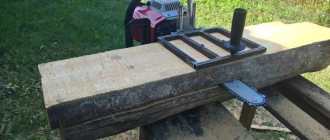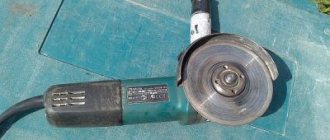If a chainsaw breaks down, runs out of gas, or a hand saw is not suitable for cutting a thick log, then for this there is a tool such as a two-handed saw, more popularly known as Druzhba-2. Previously, such a device was used to cut thick logs and large trees. Today, Druzhba-2, although it has decreased in popularity, continues to be used on the farm. To simplify the use of a two-handed wood saw, we will consider the process of how to make the tool even more convenient and practical, and find out the effectiveness of using the cutting device.
How to protect your saw from damage
Any saw (especially its cutting edge) should not come into contact with other tools during storage. Such proximity can quickly cause it to fail.
If the saw does not have a cover, then a simple method will help protect its teeth from damage. A slot of the required length is made in a piece of hose, after which the hose is placed on the saw blade. A rigid hose covered with fabric on the inside is best suited for this purpose. It holds tightly to the saw blade even after repeated use.
If longitudinal sawing is carried out in large volumes, then it is better to purchase a circular saw. Doing this with a handsaw will get you dirty. This is the first, and second: the information that can be gleaned from the texts in the frame is incomprehensible for a beginner, and useless for a professional.
How to cut a window in a piece of plywood
Sometimes the boards need to be sawn inside, cutting out the so-called “window” from the common part. But this must also be done in compliance with special rules. First you need to mark a point at the cut site. It should coincide with the corner and middle parts of the circular disk. During the entire process, the marked cutting line should be slightly to the side.
The main thing is to smoothly lower the circular disk into the plywood so that a return blow does not occur. Then, at full power, you can directly cut. Completion of work can only be carried out when the tool has completely stopped.
Basic hand saws
Any home workshop should have at least three to four saws of different types.
- Hacksaw with a wide blade for rough cutting of large parts and workpieces. The longer the canvas, the faster the work goes. However, for the same reason, the mobility of the blade itself increases, which is why the saw, as they say, is pulled to the side. Therefore, it is important to carefully monitor the cutting line, preventing it from deviating from the markings. A new product in recent years is a Teflon coating on the hacksaw blade, which makes sawing fresh wood much easier and also protects the saw from rust.
- A saw with a “back” differs from a regular hacksaw not only in that it has a rigid attachment that “damps” vibrations of the blade, but also in smaller, closely spaced teeth. This saw allows you to make clean and thin cuts.
- The finishing saw provides an even and neat cut.
- A narrow blade saw is designed for cutting rounded parts and large holes. The basic rule for caring for any saw: its blade should always be dry and clean. Saw teeth - even hardened ones - should be sharpened regularly.
Why do you need hand hacksaws for metal?
Hand hacksaws for metal are intended for sawing metal materials. This is not the only purpose of the tool, as it has proven itself well in relation to materials such as plastic, chipboard, polystyrene foam, polystyrene foam, plexiglass, ceramics, laminate.
The saw in question for sawing metal is a very necessary tool in the household, because in the absence of a grinder, it can always help in the current situation - sawing off the head of an oxidized bolt or sawing through a steel wire. The big disadvantage of such a tool is the large expenditure of physical strength and time. The presence of small teeth affects the time to achieve results. To obtain results, the master requires the application of not only titanic strength, but also patience. The result of long and hard work with the tool is the most accurate result, which is sometimes superior to cutting with a grinder.
It is important to pay attention! The cutting line with a hand hacksaw for metal is as thin as possible, which is due to the presence of small teeth in the design of the blades.
How to saw correctly
You should always cut from the cutting side, close to the marking line. This applies to both rough cuts with a hacksaw and precise cuts with a fine-toothed saw. Next, it is very important that the workpiece being processed has a stable support in the form of a workbench table top or a regular work table. For large-sized workpieces, it is better to use sawhorses. During the sawing process, the part must be held firmly with your hand at all times (large-sized workpieces should also be held with your knee) - in other words, only the saw should move.
Sawing begins with the first short movements at an angle of 30 to 45 degrees. Only after the saw blade has entered the wood and is fixed in it, you can start working with the saw along the entire length of the blade.
At the edge of the cut, cut only in short, sharp strokes. This will avoid breakages on the underside of the workpiece.
Cutting along the wood fibers is always a “critical” situation, especially if the wood has a large grain. Saw naturally wants to follow the path of least resistance, and if it is not restrained, it will begin to “walk.” That is, in such cases you have to press the saw harder than usual, which, in turn, requires the most stable position of the workpiece.
When making large cross cuts, a regular hacksaw can jam. In such cases, it is better to use a rip saw with widely spaced teeth. You just need to take into account that the cut strip will be much thicker than the saw blade.
preparing the saw for work
Cutting fresh or damp wood will be easier if you lubricate the saw blade with wax or soap.
hacksaw for longitudinal cutting of wood
The workpieces are pressed tightly against the lintel, its right edge guides the saw.
Adhesive cutting tape
To ensure that there are no chips on the material, and the veneer retains its original appearance, you can use adhesive or, in other words, masking tape. It will not leave marks on the wooden board, and will also protect the wood from visible mechanical damage.
The tape is attached in the place where the cut will be made. Next, you should carefully saw the board, after which you can remove the masking tape. It can only be dismantled away from the cut and at a right angle. The main thing is not to pull the tape upward so that the plywood does not delaminate.
Tsulaga
When processing small workpieces, the tsulaga shown in the pictures below can be of great help.
To make it, you will need a piece of wood slab approximately 20 x 30 cm in size and 2 mm thick, as well as two planed strips, which must be fixed to the slab as shown in the figure. To prevent the slab from bending and breaking, the planks must be positioned transverse to the direction of its core layer.
How to work with a circular saw
The lower bar of the tsulaga rests against the edge of the tabletop and thus sets the correct direction for the cut; the shortened upper bar ensures good centering of the saw.
If you have to saw long boards or planks, then a second tsulaga will not hurt, which will serve as a stop for the other end of the workpiece.
A piece of wood slab and two pieces of plank are enough to make a practical tsulagi.
Before starting sawing, the saw placed at an angle must be pulled towards you several times.
Saw the boards
A circular saw is one of the basic woodworking tools. There are three main operations that are performed on a circular saw: Spread the boards into blanks in width, saw off along the length (trimming) and sawing at an angle. The latter method is used if the circular saw is adjustable not only in height, but also in the installation angle.
There is another necessary, although intermediate, operation, sawing the board to thickness. For example, you have a block 70 mm thick. and it must be divided into three boards 18-20 mm thick. Or what I have to do most often, boards 45-50 mm thick. , I spread it into strips 18-20 mm thick. which I use in making furniture.
What you will need for this:
Firstly, it is very desirable that the circular saw has a variable saw height. Materials such as beech, oak, birch can be difficult to immediately cut to the full height of the saw. Therefore, sometimes you have to do this in two or three passes, gradually increasing the height of the cut.
Secondly, you can only work in this way with a planed board. If the workpiece is fairly even, then it is often enough to go through the face and edge of the board on the jointer once.
The third thing that also needs to be paid attention to is that the board should not be too short. If the saw jams and the board plays, you can be left without fingers. This is not a joke, I know similar cases.
We spread the boards into thin strips.
Here is a planed block 50 mm thick. , unfolds into three slats 12 mm thick. . When calculating, do not forget to take into account the width of the cut, that is, the thickness of the saw at the extreme points of the cut. Please also note that after sawing, the finished planks will need to be planed on a jointer, or even better, on a planer. Therefore, you need a margin of at least a couple of millimeters in thickness.
In this case, we get approximately the following calculation: Set the saw to 14 mm. from the guide ruler, only three strips will be 14+14+14=42 mm. . Plus, there are two cutting widths; here the saw spread is 3.5 mm. . That is, all dimensions are at their limit, so you need to work carefully.
Board width 120 mm. , but these dimensions refer specifically to this workpiece. We will cut on both sides on the edges. To cut a board in two passes, the height of the saw should be slightly more than half the width of the board. In this case, the height of the saw from the circular table is 65 mm. .
One more thing, the guide ruler must be of sufficient height, for example 70-80 mm. so that the board does not fall over when sawing.
Teeth and their shape
The capabilities of the saw depend on its shape and size of the teeth. A large number of teeth on a given length of blade means a fine cut but slow forward progress. A small number of teeth produces a rough cut.
Wood is made up of fibres, and when sawed they separate. This creates sawdust that needs to be removed. The finer the teeth, the faster the cut and the cutting edge of the saw become clogged with small sawdust - saw flour. The teeth can no longer grip wood to its full height. Sawing is becoming more and more tedious and, most importantly, unproductive. But large teeth almost never get clogged due to the greater distance between their tips and each other.
Almost any saw has teeth that are set apart, that is, their tips alternately deviate to the left and then to the right. The greater the angle of inclination, the wider the cut strip, and therefore it becomes less clogged with sawdust, and the saw jams less.
Over time, saw teeth become dull and need to be sharpened. In this case, the damaged wiring must be restored. Even for a specialist this is not an easy job. Therefore, we recommend purchasing saws with hardened teeth. They don't get dull as quickly, and they are easier to sharpen than the teeth of a regular saw.
You just need to put the saw blade on the table and use a sharpening stone to run it twice along the cutting edge from the end to the handle, then turn the blade over. The saw is sharpened, you can start working.
Steep teeth for rip sawing
This is how the teeth are positioned on almost all hand saws, including hacksaws and back saws.
The cutting edge of the teeth is located vertically. Suitable for longitudinal cuts.
rip sawing with a hand saw
When cutting longitudinally, the workpiece should protrude sufficiently beyond the workbench - this makes sawing easier.
The marking below the gap indicates where the saw deviates.
Interesting ideas on what can be made from a two-handed saw
If a two-handed saw is not used for its intended purpose or a certain number of teeth are missing on the blade, then there is no need to rush to get rid of it. If it cannot be used as a large saw, then many different, interesting and useful devices can be made from it. First, let's find out why a two-handed saw is used to make various devices? The reasons for this popularity are as follows:
- The instrument of the USSR era was made using high-quality high-strength steel grade 9ХФ, with a thickness of 1 to 3 mm. Nowadays it is almost impossible to find such steel
- Strict compliance with GOST 980-80 and manufacturing standards, which improves the quality of the canvas
- Corrosion resistance
Now that we know why it is worth choosing a two-handed saw of the “Friendship-2” type for making various devices, let’s figure out what can be made from it.
- Hand saw.
The first thing you can make from the two-handed hacksaw Druzhba-2 is a hand hacksaw. The principle of making an ordinary hacksaw is simple - you need to draw the shape of the future tool on the canvas with chalk or pencil. Then, using a grinder, cut it according to the template, and attach the handle to the resulting workpiece. The handle can be bought or removed from a Chinese file - Knife from a two-handed saw Friendship 2
(or throwing knives) - similarly, the blank of the future knife is cut out using a template, and then the blade is sharpened and the handle is prepared. When sharpening, you must take into account that this must be done with a file, but not emery. After all, excessive heating of the metal will lead to a decrease in strength properties - Spring
- the type of device in question has enormous shock-absorbing properties, which allows the device to be used for the manufacture, for example, of a catapult or other similar devices
There are many options for using unnecessary crosscut saws on the farm. What to make from it all depends on what is needed on the farm - a good knife, a hand saw or other tools.
To summarize, it should be noted that a two-handed saw is worth giving it a second life. After all, Druzhba-2, even from those times, is a real rarity that can last at least a couple of decades. Today you can also buy modern two-handed hacksaws from manufacturers such as Zubr, Matrix, Sibrtech and others. If you compare their quality with domestically produced files, they cope with the tasks no worse. The cost of a new cross-cut saw ranges from 400-600 rubles, which depends on the manufacturer.
Important features when choosing the right blade.
If you are a beginner and don't have the services of a circular saw expert, choosing the right blade can be a little daunting. There are different types of saw blades designed for different materials, types of cutting, and for different power saws. Then one of the most important characteristics when choosing is the diameter and type of blade. You just have to make sure that it is compatible with your circular saw model.
Here's a quick guide to help you find the right sheet:
- Hand saws accept smaller diameter blades, typically 4 to 7 inches;
- the saw will require a diamond blade with a diameter of 7-10 inches;
- table saws require 10 or 12 inches, and table saw blades must have a carbide tip;
- For cutting metal, 14-inch blades are typically used.
Another important feature is the RPM (or revolutions per minute). For example, smaller sheets have higher rotations and larger sheets have lower rotations. The recommended saw speed should be lower than the recommended blade speed. Note that a saw's RPM does not directly indicate its cutting speed, so higher RPM does not mean it will cut faster.
The diameter of the blade will affect the speed because the edge of the larger blade will move faster compared to the edge of the smaller blade as it covers more distance at the same time. On the other hand, don't rush to select a larger blade, as you also have to consider the desired cutting quality. So when looking for a suitable RPM indicator, consider the material you will be working on.
To do this, you must calculate the SFM, which is equal to Surface Foot Per Minute. The formula is as follows:
SFM = (diameter / 12) * O * RPM
Typically, you will need an SFM of 5,000 to 8,000 for wood materials, and less than 1,000 for metals.
Also pay attention to the cut line indicator when selecting a tool. This is so you can see where your sheet is going as you cut. Without this, you will have a harder time cutting a straight line. The cut indicator is usually located on the motherboard and looks like two small notches. However, in some cases you may not be able to see the crop indicator. For such cases, a small window that shows you where the leaf is is helpful, so look for it. Feel free to grab the tool and see if it feels comfortable.
Next, take a look at the motherboard. What material is it made of? Magnesium base plates are more stable, but can break if you drop the saw. On the other hand, an aluminum base plate can flex when you need it most, while plastic base plates are stable and impact-resistant.
Regardless of the material, the base plate must be flat in length and width and have a straight edge. At the end, take a look at the guard. Guards with sharp or rough edges can get stuck on wood surfaces during cutting and make lifting difficult.
When it comes to what you are going to cut, you should also pay attention to the type of blade. Different types of materials work better with different types of blades. For example, there are blades designed for cutting wood, plastic and acrylic, metal and several materials. Here are some types you may need:
- Rip Cut is wood cutting; Consequently, cutting blades are designed to cut along the grain: these blades have fewer teeth, specifically designed for aggressive cutting;
- The cross-cut blade is designed for cutting grain and has 40 to 80 teeth designed to provide a clean cut;
- Combination blades are used to make both crossed and ripped cuts as they have groups of teeth separated by a throat.
Since the teeth make a cut larger than the disc itself, its shape and quantity must be taken into account. This is another aspect of the blade that will affect your cutting performance. The more teeth, the more accurate the cut will be. Additionally, the shape of your teeth determines the quality of your cut. For example, the alternative top bevel type is suitable for quick cuts in rough wood that are along the grain. Multi-material blades are good for cross-section, and radial arm blades have a negative angle to avoid automatic feed.
Tips and tricks to help you achieve the best results.
Once you have gained some experience and are good enough to move on to more complex and sophisticated work, it is time to start learning the secrets that will help you improve your skills and create masterpieces of wood art. For a safe teacher, a good circular saw can go through any material: foam, plywood, PVC. With a diamond blade you can even cut stone! Circular saws can be configured for compound or bevel cuts and can even replace a table saw in many jobs.
Here are some tips and tricks to keep in mind:
- Start again if the cutting line has been lost. Don't try to get back on the line as it will be difficult, especially if you are new. Remove the blade and start again. After a few tries, you'll be able to cut beautiful, straight lines effortlessly.
- Don't use easels when cutting heavy boards - With heavy pieces, it's easier to cut them while they're in place than to cut them on easels. Place the board on your toe and lean towards it, but make sure you cut more than 10 inches from your foot.
- Avoid pinching When cutting leaves, you need to provide support to avoid the kickback that usually occurs if the saw blade gets stuck in the cut. When cutting on trestles, be sure to position the saw outside a pair of ribs. Position the board or sheet so that the longest part does not fall off when cutting.
- Continue cutting to a safe level and avoid cutting above your chest . Otherwise, you will not be able to hold the saw safely. For tasks that require cutting at a higher level, you should elevate the handsaw.
- Beware of splinters - This can happen on the top surface of the board or sheet and can be a nuisance if you are driving on expensive woods. To avoid this, place the table with the visible surface facing down. So in this case, if fragmentation occurs, it will affect the back. You can also mark the cut line using a utility knife to help you make a smooth cut. For a more pleasing appearance, support the board completely so that it does not allow a falling object to attract a piece of wood.
- Cut the same pieces - If you need to cut multiple pieces of the same size, place the sheets on top of each other and make sure all the edges are aligned. Then hold or secure the stack to prevent it from moving and cut all the sheets at once.
- When you need to cut a straight line, you can use a metal ruler or a wooden strip as a guide
Types of hand saws for metal
There are the following types of hacksaws for metal:
- Homemade. The simplest options that every master has in his kit. Such devices are considered an outdated option, but their production continues to this day. The advantage of these tools is their simplicity of design. The handle is made of wood and is located in the same plane with the blade
- Professional ones are intended for use during long-term work. Such products are equipped with a more comfortable handle, which in addition can be rubberized. Some expensive models are equipped with a mechanism for adjusting the angle of the cutting part during operation
- Mini hacksaws or a metal saw have a special shape that differs from the first two types. Such products are intended for use only when difficulties arise with access to the part being cut. The device has the shape of a knife with an additional point for fixing the blade. The handle is made of plastic and metal with rubber

